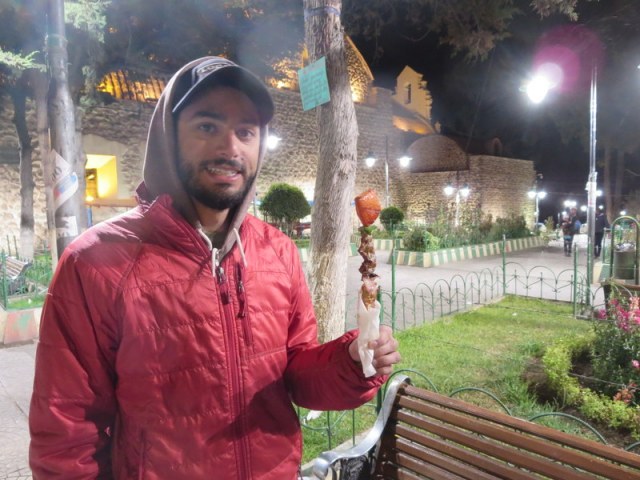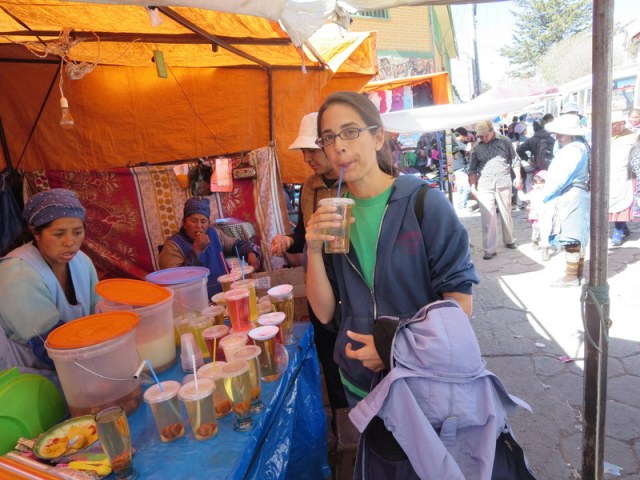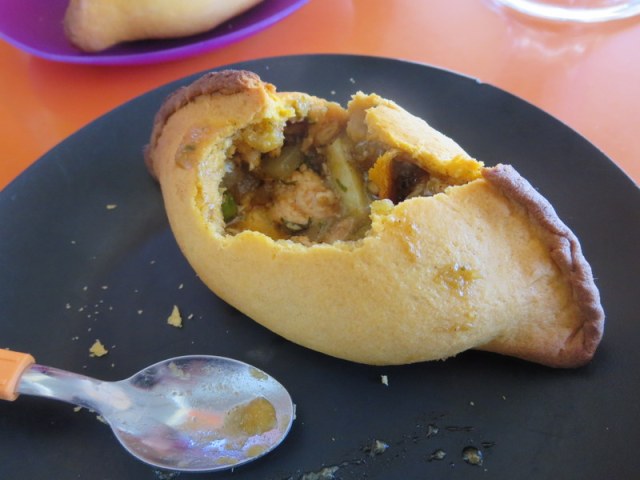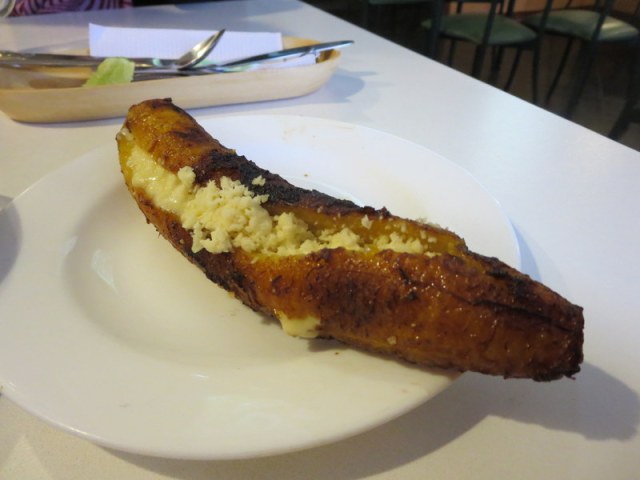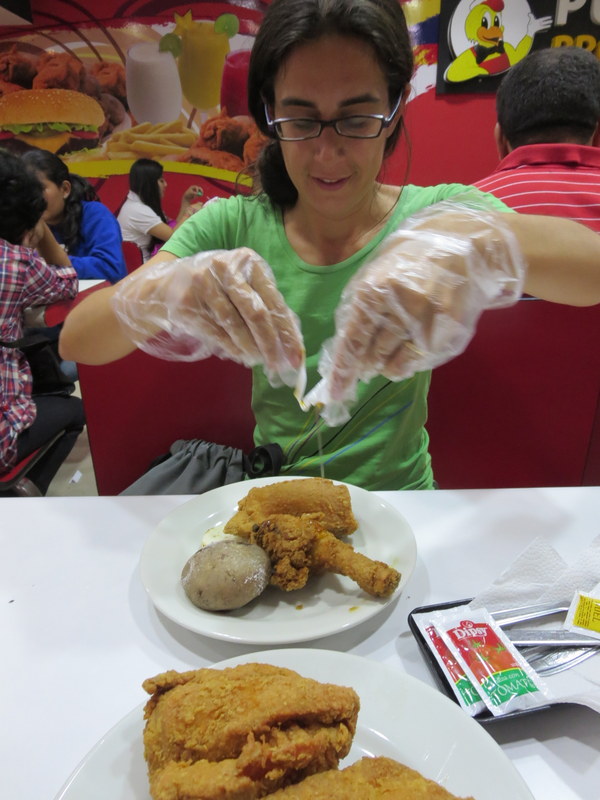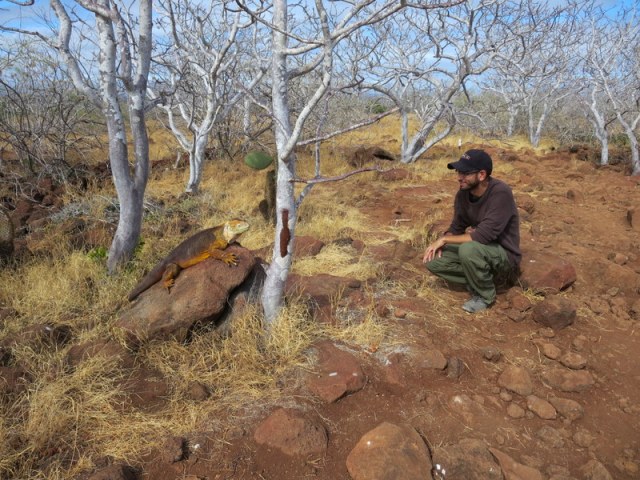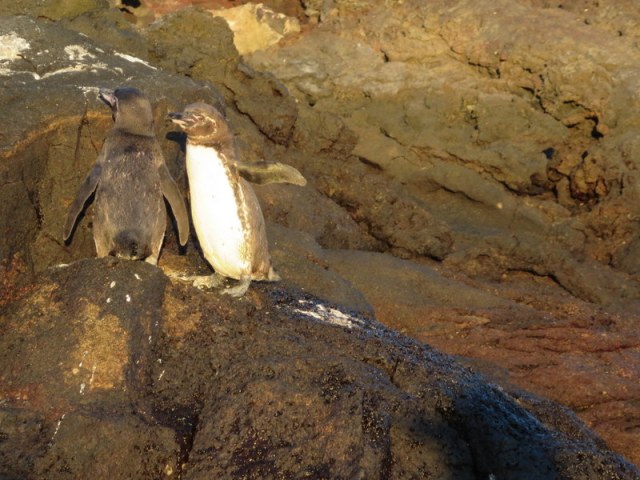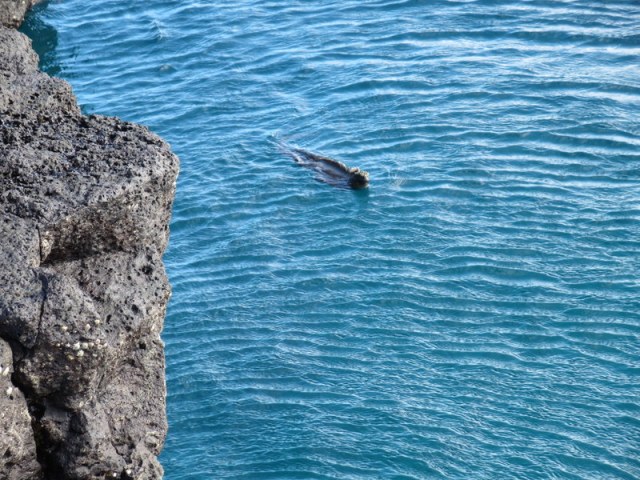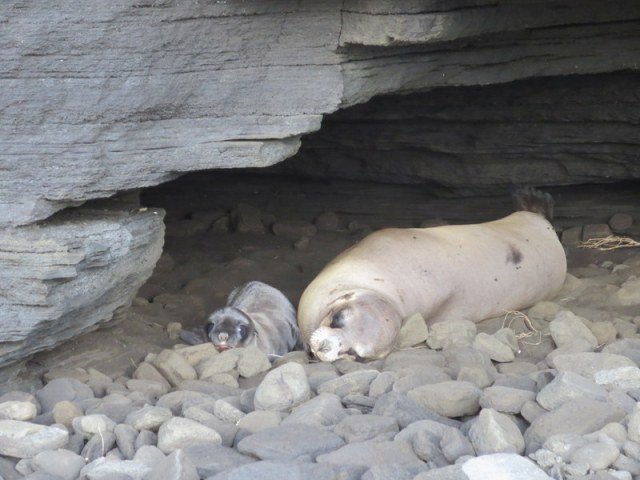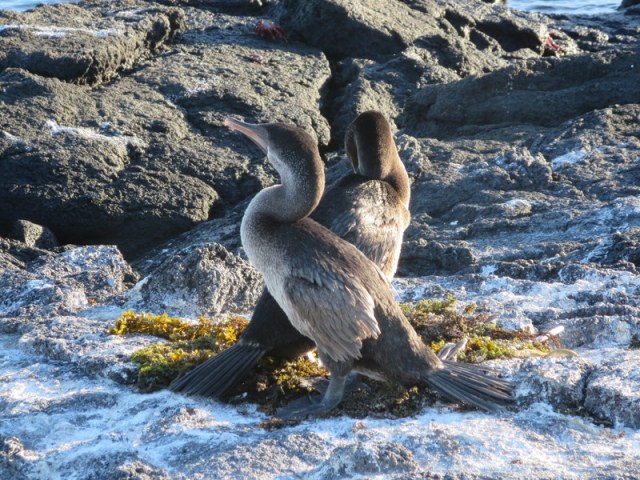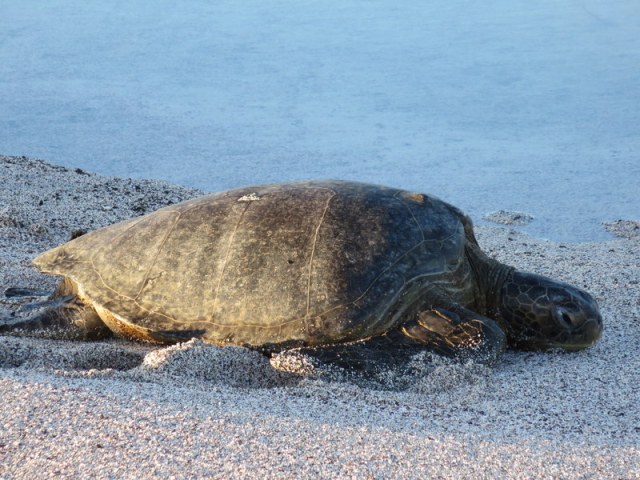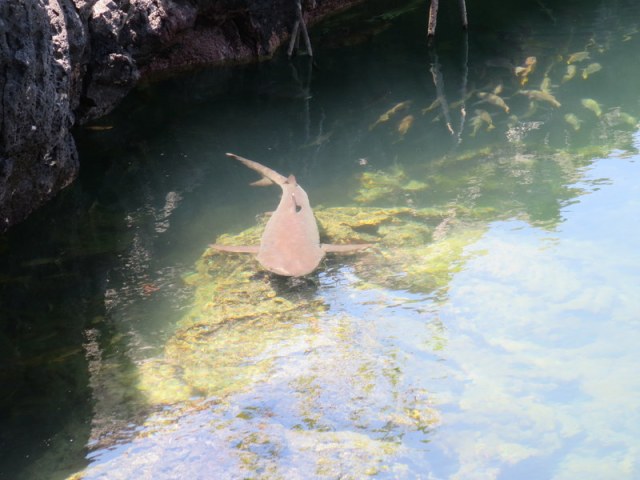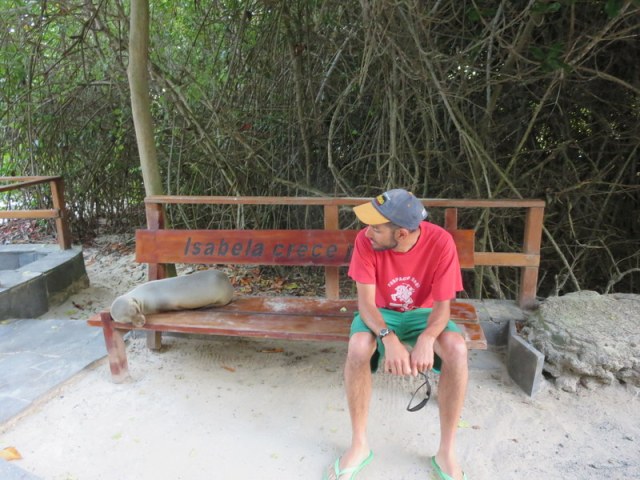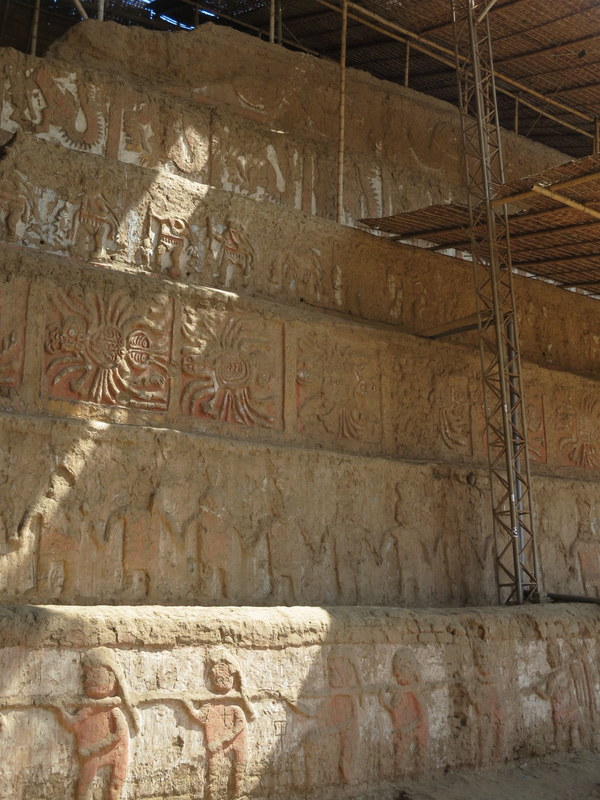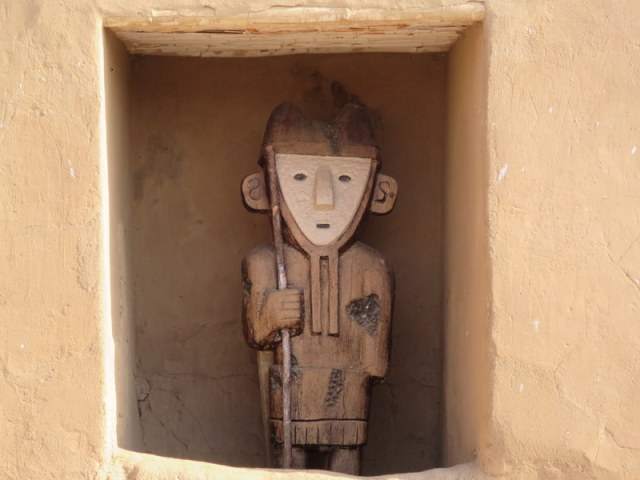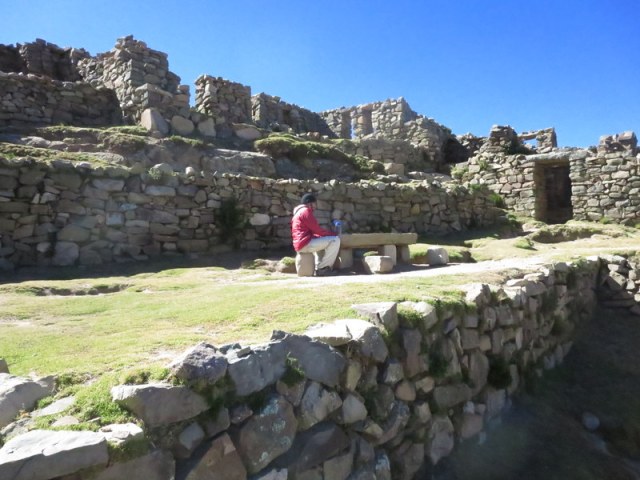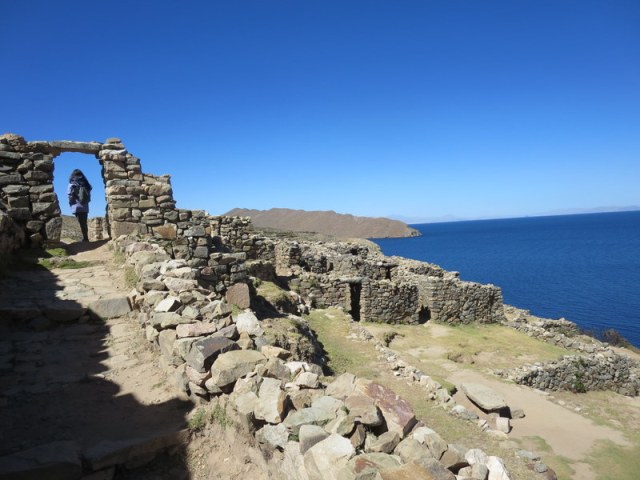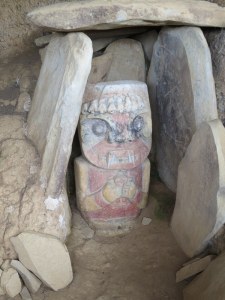Peruvian food is simply divine, from ceviche to Peruvian chicken to cuy (guinea pig). Cheap and diverse, there is a reason why you see so many Peruvian restaurants (and consequently not as much Burkina Faso-ian restaurants). We tried to eat it all in our 24 days there, which we unlikely accomplished – but we did consume the following:
Our fish dish in Peru was a winner right off the bat. Recoto relleno (stuffed pepper) and cheesy-lasanga type potatoes. Alas we didn’t find it again on the trip, which would’ve been extremely sad if not for . . .

Ceviche! Its unbelievable, but I had never had ceviche before coming to Peru. The $20/plate price tag likely scared me off, in addition to 26 years of seafood-free living. Those were both silly decisions, as I would eat it everyday if I could (and nearly did in Peru). Various fish marinated but not cooked (trout was the best), usually comes with some tubers, onions, & popped corn. Other countries do ceviche as well, but not like Peru.
Apparently coca is good for many things other than tea and cocaine. Unfortunately cookies are not one of them.
Cheese & corn on the cob combo – a satisfying combo snack.
Cuy, or guinea pig, is a regional specialty. It sounds gross and doesn’t look any less appealing as often cooked whole, but really doesn’t taste bad.
Llama in burger form – for our 3rd time consuming the animal. Unfortunately this sounded & looked better than it tasted, but I can now say I’ve eaten a llama burger and be honest, rather than the lies I’ve spurted the past 31 years (unbeknownst to many, that was my first complete sentence at the age of two).
A delightful little plate of chicken necks. I’ll prolly never write that again.
Some sort of soup – I am not a fan of soup(es), but such sentiments have not been incorporated by Christine, who insists on eating soup at an ungodly rate of approximately once every eight days.
Every now and then we splurge (more then for me, more now if Christine had her way). These alpaca kabobs broke our daily food budget, but were so worth it. If you’re ever in Cuzco, check out the restaurant Uchu and you will not be disappointed (a rare uncommissioned restaurant recommendation from me)!
Cheese ice cream –less pure cheese and more like a sweet ricotta or cottage cheese, topped with cinnamon. No less delicious, but its an Arequipa specialty, and we unfortunately did not find it on a regular basis outside the southern Peruvian city (those this was a rare find in Cuzco). Maybe it was for the best, as I’d be pushing 230 right now if we had more regular access.
Peru has all sorts of grains, potatoes, and corns you’ve never heard of. This lady sells so many types of popped corn that I had to stop counting because it was more than I could do on one hand (my typical limit).
Case in point – Ponche, a warm drink made of some sort of grain you and I have both never heard of.
Chicha of a sort, made from purple corn. Also known in some circles as purple drank.
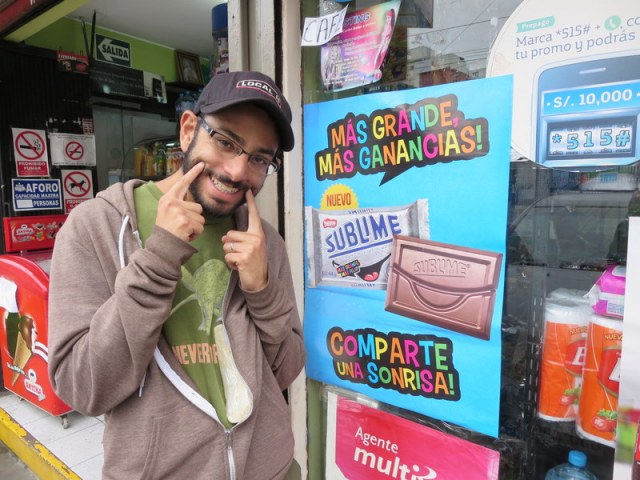
Did I mention how happy sublimes make me?
















